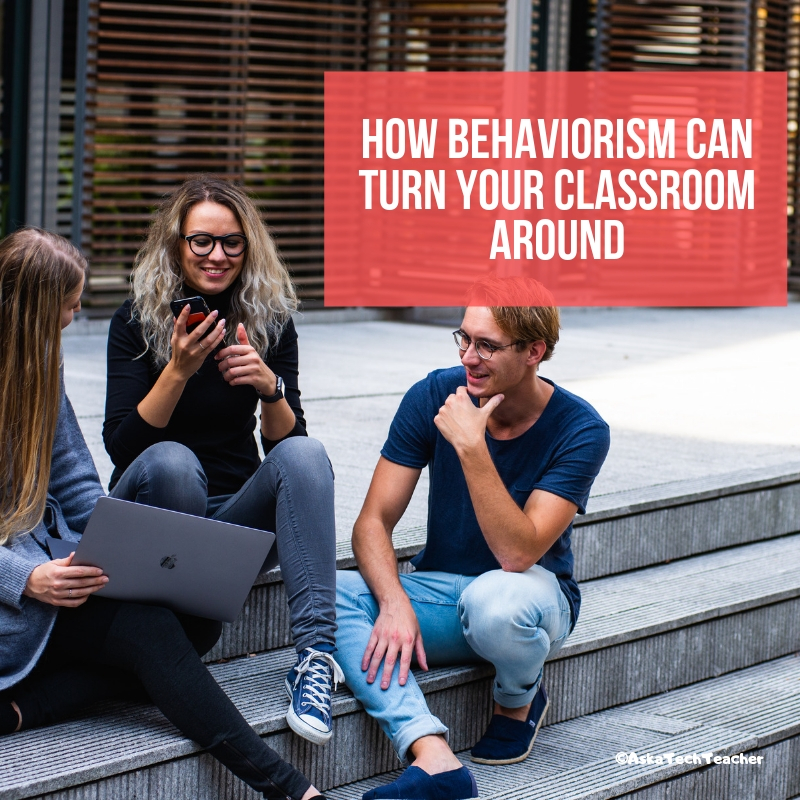With technology moving out of the lab and into the classroom, it’s becoming a challenge for some teachers to infuse their teaching with tech tools such as websites, educational games, simulations, iPads, Chromebooks, GAFE, and other geeky devices that used to be the purview of a select group of nerdy teachers. Now, all teachers are expected to have students work, collaborate, research, and publish online.
I’m fine with that because I am that nerd, but if I was expected to integrate art into my classroom, I’d break out in a cold sweat and expect the worst. As the tech coordinator responsible for helping teachers use these tools in their classrooms, I hear too often from experienced, valuable, long-time teachers that they believe the time has come for them to retire, that they just don’t get this new stuff. I also have colleagues who think it takes a special brain to understand tech (the same way students think about math and science)–one they don’t have. If either of these educators are you, here are ten tips that will take the fear out of infusing tech into your lesson plans. Take these to heart–let them guide you. They will make a big difference in how you feel about yourself and your class at the end of the day:
Make yourself use it every day
Even if you have to set aside ten minutes each day where you close the blinds and lock your door so no one sees your misery, do it. You don’t have to succeed with the tech tool you select, just use it. Whether it works or not is entirely beside the point. The point is you’re trying. You’re exploring the process. You’re unpacking the mysteries of tech in your academic career.
Believe this: The more you use tech, the more comfortable it will be, the more commonalities you’ll find between tools, and the easier it will be to share with students.
 Try to figure it out yourself
Try to figure it out yourself
Go ahead. Test the tool. You won’t break the computer. Try the problem-solving that has worked in other situations–like intuit a solution, look around the screen and see what pops out, and read the manual.
The hardest part of this hint is believing you can do it. When I got my first computer, most people didn’t have one so I taught myself by testing, trying, failing, researching, or whatever worked. I wasn’t always successful, but I came up with a good template for problem solving which works to this day.
 Ask for help
Ask for help
If you can’t figure it out yourself, there’s no shame in asking for help. Don’t let those geeky tech nerds who work magic on your school’s computers intimidate you. Walk into their office, stand there and talk until they help you. If they aren’t clear, ask them to repeat it. You are smart, just not about tech!
Attend webinars
There are lots of free online learning opportunities like LearnZillion and Russell Stannard’s Teacher Training Videos. Here’s a longer list. You can also go to YouTube and search by topic. Many of these are thorough, clear, and easy-to-understand. If one isn’t, try another. For example, YouTube has over seven pages of videos on how to use Photoshop.
In addition to rewindable online learning, try live webinars and Google Hangouts. Your favorite teacher resource website probably sends notifications when these are available (like SimpleK12). Don’t worry that you’ll be the dumbest one there or that they’ll say stuff you don’t understand. It’s not true. Lots of attendees are silent, there to learn a subject they don’t know.
Don’t expect to be perfect
Embrace mistakes. Let students see you’re human, which gives them permission to be less than perfect also. A lot of learning happens through failure. Understand that and expect students to understand it, also.
Having said that, I occasionally get parents who are unhappy when I struggle with concepts. They must think I get a daily upload of all tech information that I can access as needed, or that I absorb technology by osmosis. What they don’t realize is there are six bazillion tech education tools out there (and growing) and the one I’m teaching was selected because it’s perfect for the lesson plan. It requires a bit of re-education on the parent’s part and a supportive administration to get past those attitudes.
Believe problem solving is fun
NOT knowing how to use technology is not a ‘problem’. It’s a chance to think, stretch the brain, achieve new heights and that huzzah feeling that only comes with great success. Model behavior appropriate to learning new material that you want to find in students. Show them that you don’t whine, throw up your hands, say you can’t do it, or call someone outside for help. You attack the problem with passion, confidence, and a smile.
You know as much as most other teachers
I talk to teachers across the country. I know what confuses them, what causes them to reach out to their PLN for help. Most are struggling just like you–some more. They put a brave face on for their school community, but there are times they are only one step ahead of the learners queued up behind them.
You’re allowed to Google an answer and then teach it the same day
Yes, you are allowed to reach out to experts for answers even if it’s minutes before the lesson plan is rolled out. With your knowledge and teaching skills, you’ll understand the directions and how they connect to the bigger picture. Search engines like Google and Bing are effective approaches to finding solutions as long as you vet the sources for accuracy and legitimacy. I do it in the middle of class if necessary. For example, last week, a boy pushed some shortkey by accident and ended up with double underlines on everything in his Word doc. It took fifteen seconds on Google to come up with the solution (Ctrl+Shift+D). Let students watch you do this search on the Smartscreen and then model it themselves when they have problems.
If you have teachers or students who constantly ask for help with problems you’ve already solved, there’s an acronym for that–LMGTFY. Let Me Google That For You. This is a gentle reminder to your colleagues that they can take responsibility for their own learning via the Google search engine (or Bing, or any other you choose to use).
Every day, there are new ways to use technology in education. You will never finish learning this topic. What you can learn is a strategy for addressing it. By transferring knowledge, , leveraging what you do know, and allowing for flexible learning paths, you can develop the habits of mind that will make yourself comfortable with the new educational paradigm.
–appeared first on TeachHUB
More on technology in teaching:
13 Reasons For and 3 Against Technology in the Classroom
5 Top Ways to Integrate Technology into the New School Year
Jacqui Murray has been teaching K-8 technology for 15 years. She is the editor/author of over a hundred tech ed resources including a K-8 technology curriculum, K-8 keyboard curriculum, K-8 Digital Citizenship curriculum. She is an adjunct professor in tech ed, CSG Master Teacher, webmaster for four blogs, an Amazon Vine Voice book reviewer, Editorial Review Board member for Journal for Computing Teachers, CAEP reviewer, CSTA presentation reviewer, freelance journalist on tech ed topics, and a weekly contributor to TeachHUB. You can find her resources at Structured Learning.
updated 5-1-16











































thanks for these encouragements! I tell my reluctant teachers that technology is like your mother-in-law (with apologies to awesome mother-in-laws everywhere!) You may not always see eye-to-eye on everything, but she’s here to stay, and the more you invest in building a relationship, the easier the relationship will become.
Love the analogy. I bet that resonates with lots of teachers.
Joyce O – Don’t mind if I use that “technology is like your mother-in-law” analogy. It is gospel.
Great tips! I’ve also come to believe that you have to establish the mindset that a bit of chaos is ok and trust the process. This is difficult form any of us who are used to having most things run smoothly.
I agree, Vicki. Chaos is our friend. It’s a great chance to show students how we roll with the storms.